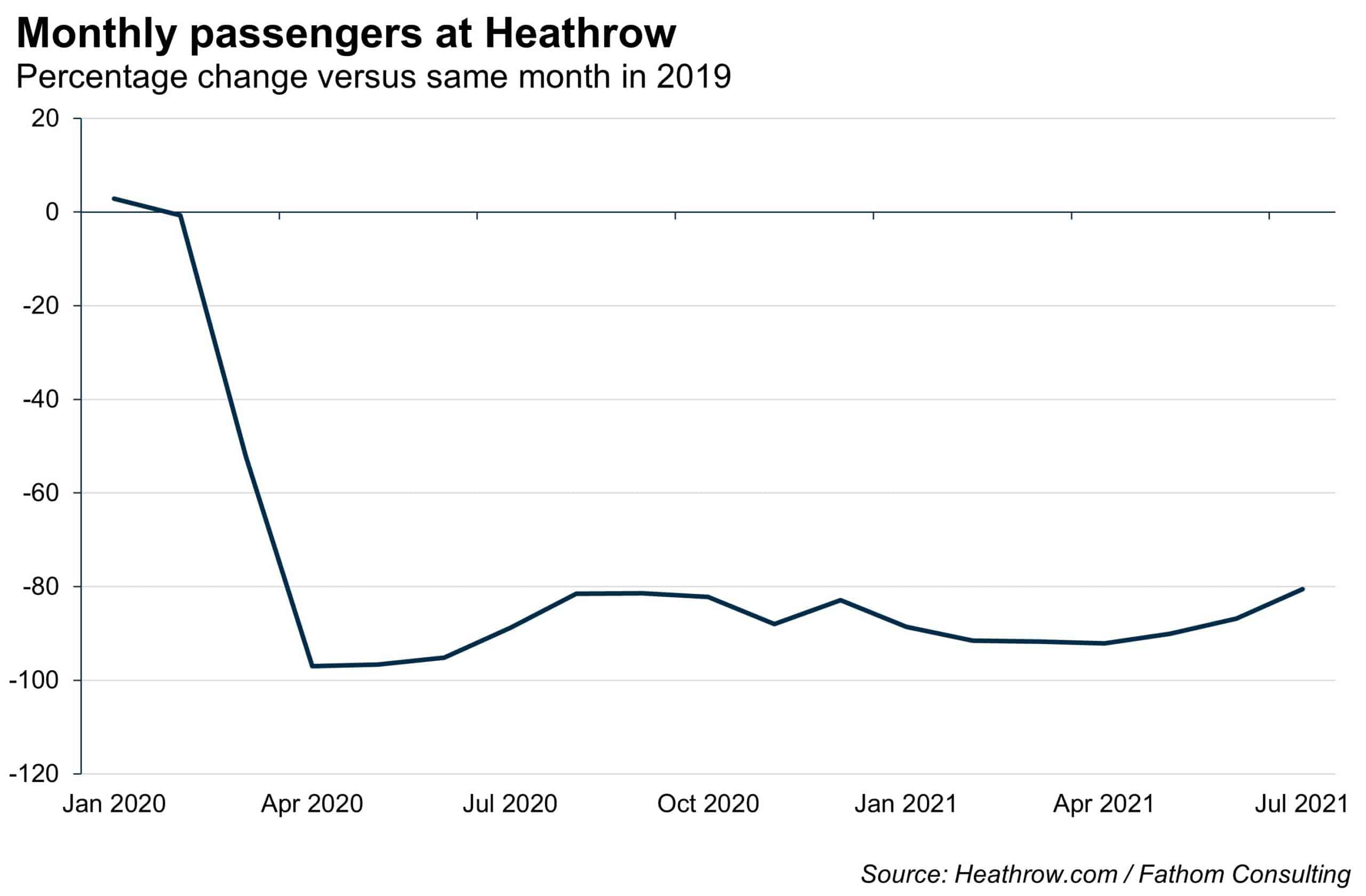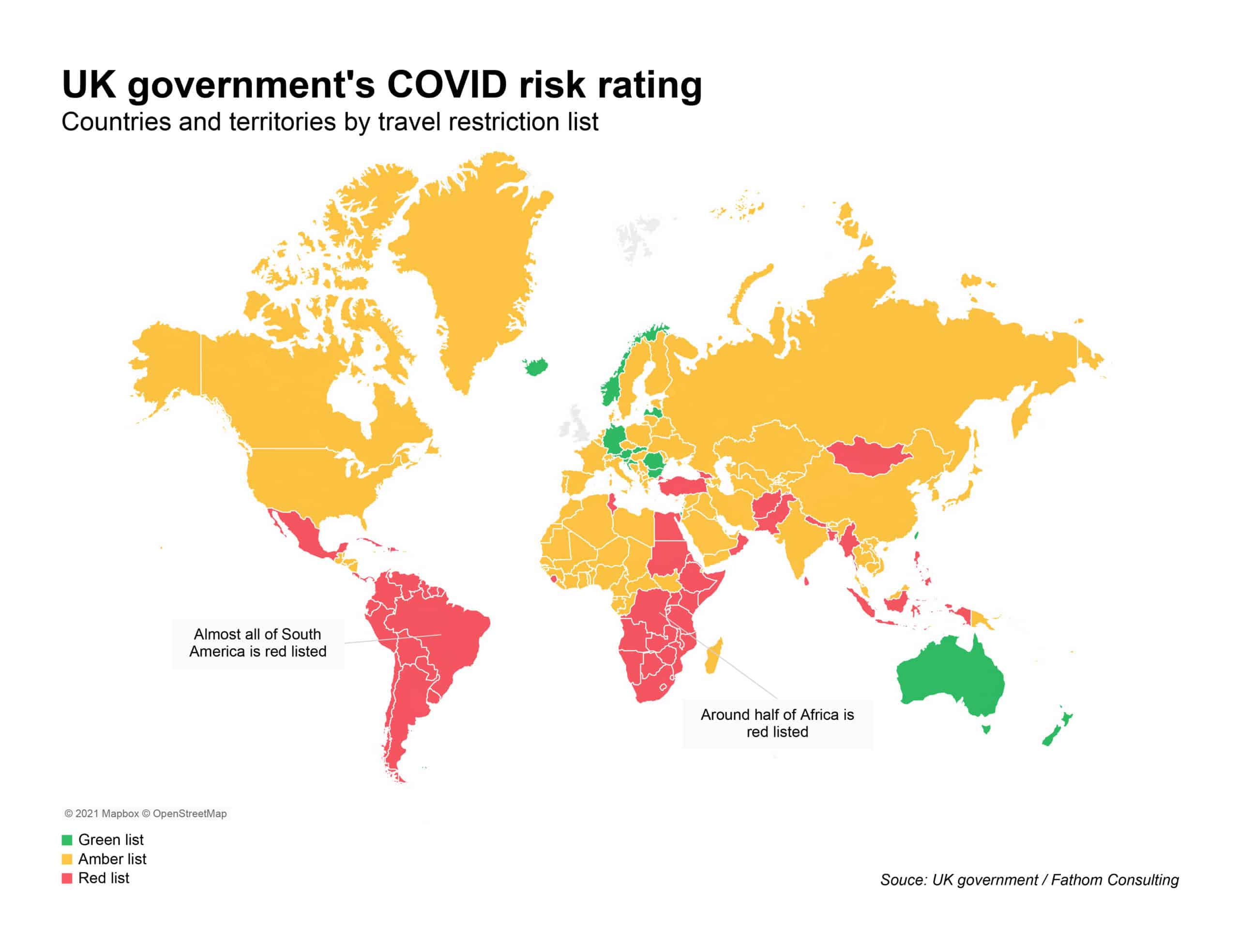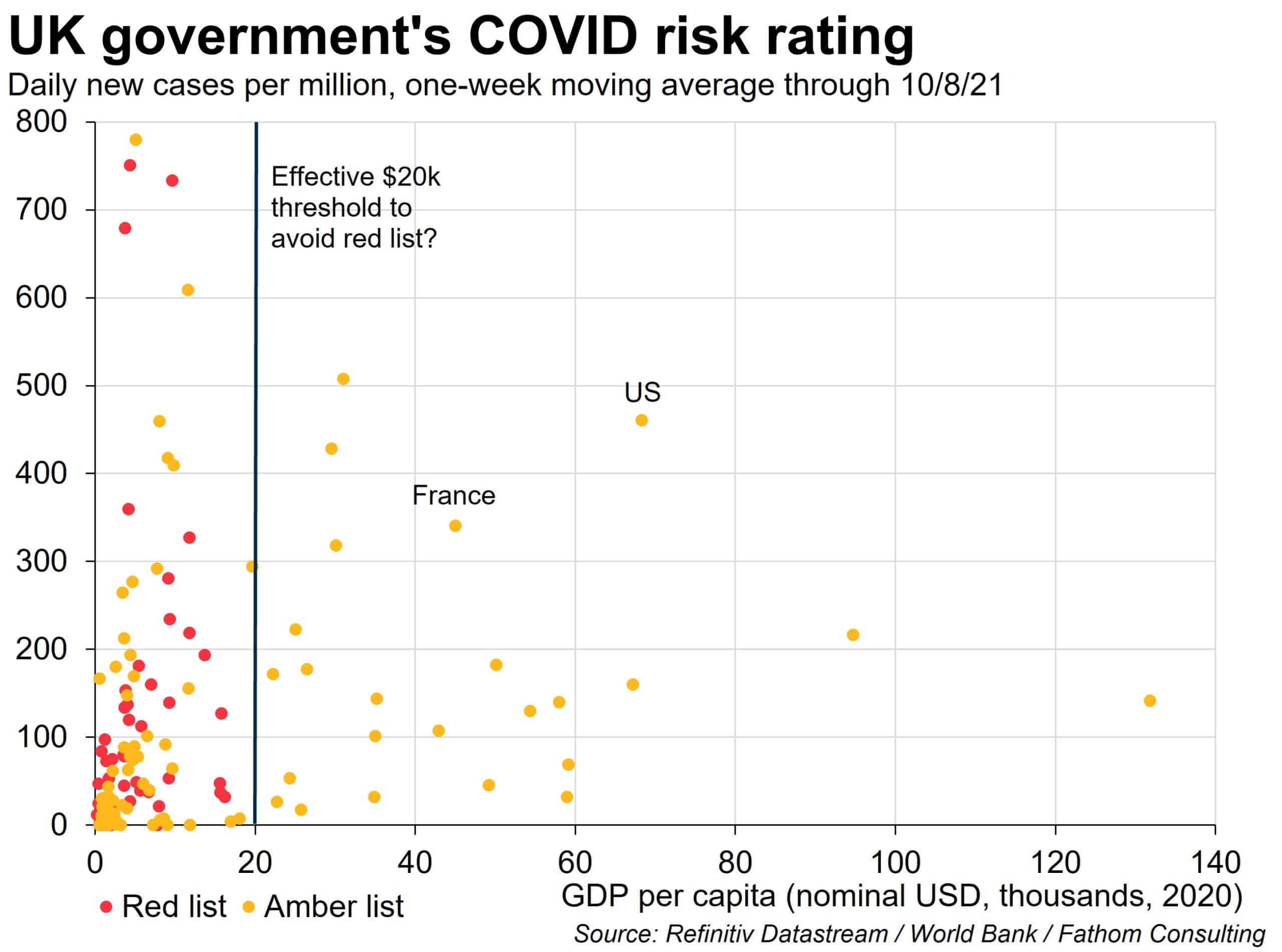A sideways look at economics
This perhaps isn’t the ideal week for a rant about the difficulties of foreign travel. The IPCC released its latest thinking, suggesting a 1.5°C warming in global temperatures within 20 years is almost inevitable — no matter what humans burn or don’t burn next. Turn on your TV and you’re likely to be greeted by video of raging fires in Algeria, Greece or Italy. Many would say that this isn’t the right year either. The coronavirus pandemic continues to bring misery to large parts of the world. Global daily fatalities are higher today, despite 2.4 billion vaccine doses having been administered, than they were through most of 2020. You don’t need me to tell you that international travel helps to spread infectious diseases. Nonetheless, a (personal) rant I will deliver.
Foreign travel is an important driver of economic growth, and therefore important for livelihoods. More importantly, it’s enshrined in Article 13 of the Universal Declaration of Human Rights.[1] For the 3.5% of the world population who are migrants (272 million people), it’s often a necessary condition to see loved ones. Few would argue against any increase in travel restrictions during a global pandemic, but the UK’s current travel rules increasingly look out of whack with the government’s strategy towards the virus.
Heathrow airport announced this week that passenger traffic increased by 58% in July. However, that figure remained 81% below the level seen in July 2019. There are many people who will opt out of foreign travel at the moment for health reasons. Others will find the cost prohibitive. (A rant about the dodgy private companies making out like bandits from the UK’s mandatory testing regime is in order.) Meanwhile, many countries won’t accept British arrivals given high infection rates and the spread of the Delta variant. However, the UK’s travel recovery lags the one seen stateside, where TSA throughput is nearing on 2019 levels thanks to strong domestic travel, as well as that seen in large parts of continental Europe.

The UK government currently operates a ‘traffic light’ system to international travel. Countries are rated as either green, amber or red, with different restrictions depending on which colour country you have been in. Arrivals from all must show proof of a negative COVID test taken 72 hours before flying, as well as confirmation that they will take at least one more once they have arrived in the UK. Arrivals from green countries don’t have to quarantine. The same is true for arrivals from amber countries if they have been fully vaccinated, otherwise they must quarantine at home for at least five days. Arrivals from red countries are banned unless they are British/Irish or permanent UK residents, in which case they must spend ten days at a government quarantine hotel that costs £2,285, regardless of vaccination status.[2]

[For a colour-blind friendly version of this map, please click here.]
The relative costs and benefits of hotel quarantine are up for debate. Certainly, large majorities in New Zealand polls have said that they approve of their country’s border closure. Given that it has helped to prevent any large outbreak there, that is not surprising. The benefits to the UK are much less clear. COVID cases are pretty high already, with the latest variant of concern dominant for several months now. The vaccination programme has been an enormous success. Nonetheless, some would argue that countries with much higher infection rates should still face harsh restrictions to prevent seeding of even more waves. If there was evidence that the traffic light system helped to achieve that, a debate could be had. However, the available evidence suggests it’s having a marginal impact at best in preventing onward transmission.
All UK arrivals are forced to take ‘Day 2’ tests. The latest figures from PHE show that 1.4% of arrivals from red countries test positive, compared to 1.3% who test positive after arriving from an amber country. Meanwhile, the ONS estimates that 1.3% of England was COVID-positive in the week to 31 July. Considering the average English person is almost as likely to be infected as the average arrival from abroad, and faces essentially no restrictions on their behaviour, there seems to be a case to debate whether home quarantine for five days is even worth it. Enforced hotel quarantine at the cost of over £2k seems wildly disproportionate.
The precise criteria that the UK government uses to place countries on the red list are not publicly available, but are broadly based on the risk that arrivals will have COVID and the risk that they will have a new variant. The data presented above suggest that on average transmission risk is more or less the same between amber and red arrivals, so the risk of variants seems to be only reason in support of travel bans and enforced hotel quarantine. Nobody knows where the next variant will come from. And many red country residents visit amber countries. As the UK government’s scientific advisors are reported to have told ministers, the only to way prevent the import of a new variant is to subject all UK arrivals to hotel quarantine as is done in Australia and New Zealand. And even that strategy is struggling in the face of Delta’s increased transmissibility. Moreover, since there will always be a risk of new variants (of COVID and other diseases), it’s an argument to keep this system in place forever. I’m pretty sure not many people would be in favour of that.
What else could explain which countries are amber and which are red? Anyone who has looked at a map of the countries that are on the red list would quickly see that they are almost entirely located in Africa or Latin America. It seems unlikely that a purely scientific approach would achieve this result. Economics seems to be an important consideration. As the chart below shows, official case numbers vary among amber and red countries, however, differences in income levels are much greater in amber countries than in red. Moreover, there is not a single country on the red list with a GDP per capita above $20k.[3] The US has one of the highest official case counts but also one of the highest average incomes. It’s on the amber list. When the scientists recommended that France be put on the red list, the UK instead created an entirely new category that fell short of hotel quarantine and that applied only to France and no other country. It’s hard, borderline impossible, to conclude anything other than poor countries are being treated more harshly in this process.

So, the UK’s traffic light system: hasn’t prevented the UK from having high infection rates; didn’t prevent the import of the Delta variant earlier than in most other European countries; appears to discriminate against poorer countries; and has large negative effects. Why is the government doing it? One obvious reason is that it polls well. UK residents are among the most likely to favour border restrictions. It’s reasonable that politicians should reflect the public’s views. However, politicians should also shape public opinion. Studies have found that higher pathogenic threat is associated with xenophobic attitudes. I can’t be the only one worried about longer-term risks from a red list that is made up of countries that are largely poor and located in the global south.
The government’s own advisors think that current restrictions are too lax to prevent new variants getting in. At the same time, they are too severe for many to visit a red country. The current system is perfect if your intention is do a lot of harm without any clear benefit. Some might argue that the policy doesn’t provide any benefit because it’s not severe enough. They would (and do) say that all countries should be on the red list. It’s a perfectly legitimate point of view, although not one that I share. Three-quarters of the UK’s adult population is fully vaccinated. Tonight, Fabric is open. Tomorrow, Old Trafford will be full. As of next week, the close contacts of confirmed positive cases won’t have to isolate if they have received two doses. The government is adopting a ‘live with the virus’ strategy. It’s time the approach to international travel reflected that.
This week the red list began to face legal scrutiny, with lawyers bringing a case that argues hotel quarantine has led to the “false imprisonment of people who are fully vaccinated and have tested negative”. I’m not a lawyer and I’m also not an epidemiologist but I hope the government ends the red list out of choice rather than judicial decree.
[1] “Everyone has the right to leave any country, including his own, and to return to his country”.
[2] Only two other countries in Europe operate hotel quarantines (Ireland and Norway). Fully vaccinated travellers are now exempt in both countries.
[3] Réunion, a French department in the Indian Ocean, is on the red list. Its GDP per capita is $25k.